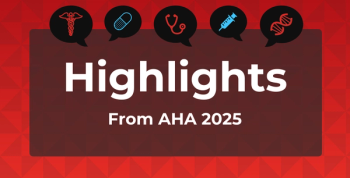
USPSTF Maintains AFib Screening Recommendation
The US Preventive Services Task Force (USPSTF) had announced an update to its 2018 recommendation on screening for atrial fibrillation (AFib) for older adults.
Despite an extensive review of evidence and new clinical trials,1 the US Preventive Services Task Force (USPSTF) reached a similar conclusion in the update to its 2018 screening recommendation for
Results were published
According to the USPSTF statement, “AFib is a major risk factor for ischemic stroke and is associated with a substantial increase in the risk of stroke. Approximately 20% of patients who have a stroke associated with AFib are first diagnosed with AFib at the time of the stroke or shortly thereafter.”2
The review commissioned by the USPSTF examined evidence published via PubMed, Cochrane Library, and trial registries published through October 5, 2020, and references, experts, and literature published through October 31, 2021, that encompassed 113,784 patients. Key questions on the harms and benefits of screening for AFib, detecting AFib, screening accuracy, and the benefits and harms of anticoagulation were investigated1:
- Does screening for AFib with selected tests improve health outcomes (ie, reduce all-cause mortality, reduce morbidity or mortality from stroke, or improve quality of life) in asymptomatic older adults?
- Does systematic screening for AFib with selected tests identify older adults with previously undiagnosed AFib more effectively than usual care?
- What is the accuracy of selected screening tests for diagnosing AF in asymptomatic adults?
- What are the harms of screening for AFib with selected tests in older adults?
- What are the benefits of anticoagulation therapy on health outcomes in asymptomatic, screen-detected older adults with AFib?
- What are the harms of anticoagulation therapy in asymptomatic, screen-detected older adults with AFib?
Despite the review determining that unknown cases of AFib can be detected more often via screening, evidence remains limited on how health outcomes can be affected. In addition, there is still a risk of major bleeding from anticoagulation, and since the USPSTF’s 2018 screening recommendation, no new trials have investigated anticoagulation’s effect on screening-detected AFib.1,2
According to the USPSTF, AFib is the most common cardiac arrhythmia, a major risk factor for ischemic stroke, and associated with increased stroke risk because it often remains undetected. Stroke can also be the first sign of AFib. Therefore, treatment typically encompasses symptom management and stroke prevention.2 Anticoagulation is known to reduce risk of the latter, and the USPSTF’s review for this 2022 update investigated automated blood pressure cuffs, pulse oximeters, smartwatches and smartphone apps as additional screening methods.
One accompanying
A second
References
1. Kahwati LC, Asher GN, Kadro ZO, et al. Screening for atrial fibrillation updated evidence report and systematic review for the US Preventive Services Task Force. JAMA. 2022;327(4):368-383. doi:10.1001/jama.2021.21811
2. US Preventive Services Task Force. Screening for atrial fibrillation: US Preventive Services Task Force recommendation statement. JAMA. 2022;327(4):360-367. doi:10.1001/jama.2021.23732
3. USPSTF statement on screening for atrial fibrillation. News release. JAMA For the Media. January 25, 2022. Accessed January 25, 2022.https://media.jamanetwork.com/news-item/1-25-jama-uspstf-statement-on-screening-for-atrial-fibrillation/
4. Greenland P. Screening for atrial fibrillation—more data still needed. JAMA. 2022;327(4):329-330. doi:10.1001/jama.2021.23727
5. Kalscheur MM, Goldberger ZD. Screening for atrial fibrillation—refining the target. JAMA Netw Open. Published online January 25, 2022. doi:10.1001/jamanetworkopen.2021.39910
Newsletter
Stay ahead of policy, cost, and value—subscribe to AJMC for expert insights at the intersection of clinical care and health economics.









































